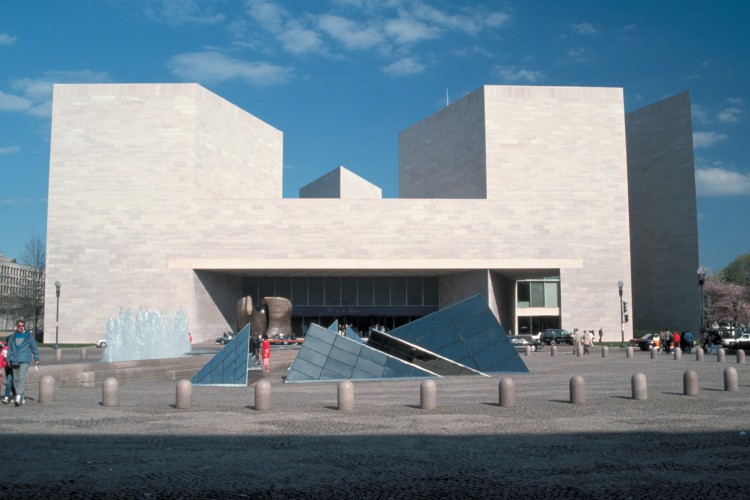Chinese American architect I.M. Pei was only 61 years old in this photograph taken in his New York City office in 1978. Credit: © Jack Mitchell, Getty Images
Looking ahead to May’s celebration of Asian/Pacific American Heritage Month (APAHM), today World Book wishes a happy 100th birthday to renowned Chinese American architect I.M. Pei. One of the world’s greatest architects, Pei is noted for his creative urban designs of skyscrapers, housing projects, museums, and academic and government buildings. Pei’s creations are characterized by broad irregular geometric shapes and large open interiors. Pei, who lives in the Manhattan borough of New York City, was born on April 26, 1917, in Guangzhou (also called Canton), China.
Ieoh Ming Pei came to the United States in 1935 to study architecture at the University of Pennsylvania. Unable to return to China because of World War II (1939-1945), Pei remained in the United States and furthered his education by entering the Graduate School of Design at Harvard University. There he worked with the famed architects Marcel Breuer and Walter Gropius. Pei earned a master’s degree in 1946 and became a U.S. citizen in 1954. His early works include the Mile High Center (1955) in Denver, Colorado, and the Society Hill housing project (1964) in Philadelphia.

Chinese American architect I. M. Pei designed the glass pyramid, seen here, at the entrance to the Louvre museum in Paris, France. Credit: © SuperStock
In the late 1960's, Pei began to develop a more personal style using prism shapes. His later projects include the National Center for Atmospheric Research (1967) in Boulder, Colorado; the Everson Museum of Art (1968) in Syracuse, New York; the John Hancock Building (1973) in Boston; the East Building (1978) of the National Gallery of Art in Washington, D.C.; and the John F. Kennedy Library (1979) in Boston. In 1989, Pei completed the glass pyramid that serves as the entrance to the Louvre museum in Paris, France. Pei’s Morton H. Meyerson Symphony Center in Dallas also opened in 1989. His Rock and Roll Hall of Fame and Museum in Cleveland opened in 1995. Pei also designed the Miho Museum (1997) near Kyoto, Japan; the German Historical Museum (2003) in Berlin; and the Museum of Islamic Art (2008) in Doha, Qatar.

Chinese American architect I. M. Pei designed the East Building, seen here, of the National Gallery of Art in Washington, D.C. Credit: © Lee Snider, Corbis
Pei has won numerous awards for his work, including the Pritzker Architecture Prize for lifetime achievement in 1983. The award notation credited Pei with giving “this century some of its most beautiful interior spaces and exterior forms.” In 2010, the Royal Institute of British Architects (RIBA) awarded Pei its annual Royal Gold Medal. As a famous architect turning 100 years old, Pei is not alone in his longevity: Frank Lloyd Wright lived to be 91; Philip Johnson died at 98; and Oscar Niemeyer lived to 104.
APAHM celebrates the culture, traditions, and history of Asian Americans and Pacific Islanders in the United States. It began as a two-week celebration in 1978 and expanded to the full month of May in 1990. May was chosen to commemorate the arrival of the first Japanese immigrants in the United States—noted as May 7, 1843—and for the May 10, 1869, completion of the American transcontinental railroad. The railroad companies laying the tracks relied heavily on Chinese immigrant workers.
Untitled Document Can't view the linked articles? Subscribe to World Book Online

World Book Online delivers a progressive sequence of core databases supported by supplemental
tools, such as language translation, graphic organizers, and unique Webquests. Moving from
Early World of Learning to World Book Advanced, World Book Online aligns end-users with their
appropriate learning levels. Each stand-alone site provides additional features to support the
needs of users’ specific capabilities.
The World Book Difference
World Book combines cutting-edge technology with traditional editorial excellence to produce
authoritative, trustworthy, and unbiased content. The digital content is updated in real time and
carefully curated for each learning level. Accessible 24/7, the content is available on a variety of devices.
World Book Online combines 21st-century instructional techniques with timely information.
By breaking down complex topics and using easily understandable text, World Book Online helps to
build fluency and increase comprehension. Featuring single sign-on capability, these sites are paired
with highly visual content to engage even the most reluctant reader. Our collection of resources kindles
a lifelong learning experience for every user. This adherence to clarity, currency, and accuracy makes
World Book’s digital offerings an information hub for the classroom, library, and beyond.